Yesterday was a slow day on the island, though we did see our first Western Kingbird of the year (I should say that Mia saw it as I missed it – one of the disadvantages of being the driver…). The sighting got me to thinking about these aggressive tyrant flycatchers and reminded me of how much I’ve missed them these last few months so I decided to devote a post to them.
They’re called “kingbirds” because of their belligerent behavior and fearless nature. Kingbirds are very aggressive toward other birds and it’s not unusual to see them attacking almost any species – including hawks and American Kestrels. They’re extremely agile in flight and can get away with such seemingly foolish behaviors.
1/800, f/7.1, ISO 500, 500 f/4, 1.4 tc
In this shot you can see most if the important field marks – pale gray head and breast, darker mask through the eyes, underparts yellow, tail black with white edges and black bill. The sexes are similar. Most folks are unaware that the species has a small orange-red patch on the top of the head but it is nearly always hidden except while performing certain behaviors.
1/3200, f/6.3, ISO 500, 500 f/4, 1.4 tc
These birds are almost unknown to walk anywhere – virtually all locomotion is by flight. Typically they hunt from elevated perches so they flit from perch to perch looking for insects mostly. When I’m lucky I find them on natural perches like this dried thistle…
1/1250, f/6.3, ISO 640, 500 f/4, 1.4 tc
or this mullein.
1/2500, f/5.6, ISO 800, 500 f/4
But at least as often they’ll perch on wires or fence posts – which still works for me if the wire is rusty or the post is aged and rustic. I caught this one taking off after another bug.
1/3200, f/6.3, ISO 500, 500 f/4, 1.4 tc
I found this bird on an unattractive metal post and almost passed it by but decided to try for a take-off shot. The bird obliged me with an interesting flight posture but I still got the post in the shot. Oh well, at least it was rusty…
1/2500, f/5.6, ISO 500, 500 f/4
This one showed me a behavior I hadn’t seen before. It spread its wings and fluttered them gently like this for quite a while. The shot was taken in June so my suspicion is that it was some kind of sexual or territorial display though I didn’t notice another kingbird in the vicinity.
1/2500, f/5.6, ISO 640
Two things were new to me in this image. First of all I’d never seen a kingbird eject a pellet. In fact, the only thing that Birds of North America Online out of Cornell says about pellet ejection in this species is “no information”. I’m planning on sending them the photo to see if they’re interested in the documentation. The other thing I found interesting here is how violently the bird threw the pellet to its by side shaking its head vigorously. You can see that the pellet is still traveling “uphill” when I pressed the shutter. I’ve seen dozens of birds eject pellets and it’s always before been ejected almost straight down with no shaking of the head to expel it.
1/1600, f/6.3, ISO 500, 500 f/4, 1.4 tc
This bird hunted a field from this perch for four minutes while I tried to photograph it in this challenging directional light. Just for the fun of it I tried to track it when it dove into the weeds after a meal and fired off a few shots.
1/1600, f/6.3, ISO 500, 500 f/4, 1.4
When I got home and processed the photos I found this. The bird is about to grab, in flight, what I believe to be a tiny beetle (the light spot on the upper right of the small “lump” on the twig just in front of the bill tips). This shot illustrates part of the fun of bird photography for me – you just never know what you’ll end up capturing. It’s not a great image but I still enjoy it. It’s a damn good thing that pixels are cheap in this digital age though – I’d hate to have to pay for all the film and processing it would have taken in the old film days to get a few serendipitous shots like this one.
Ron


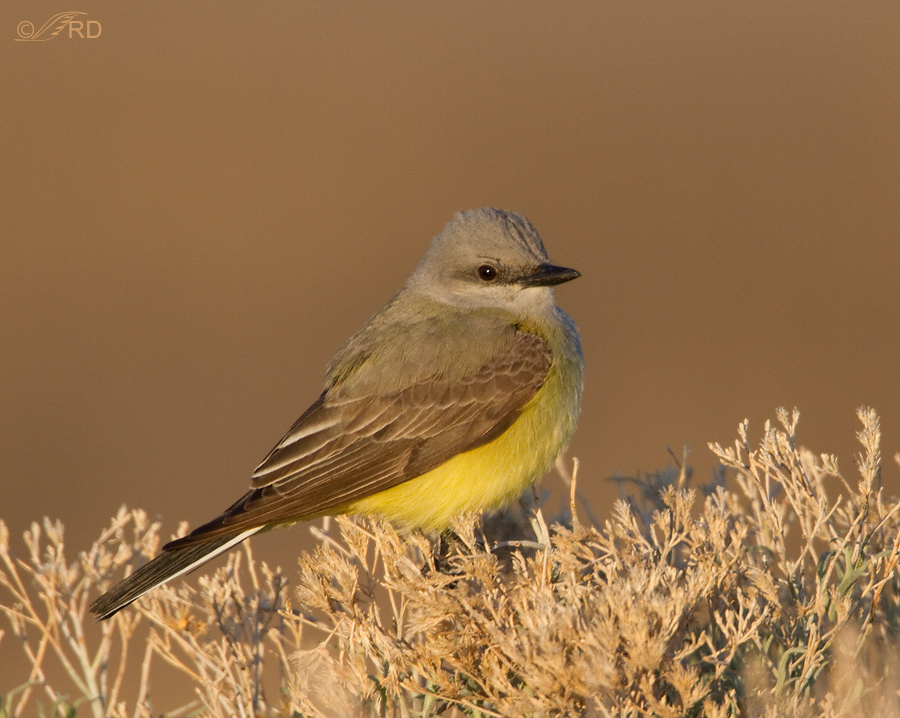
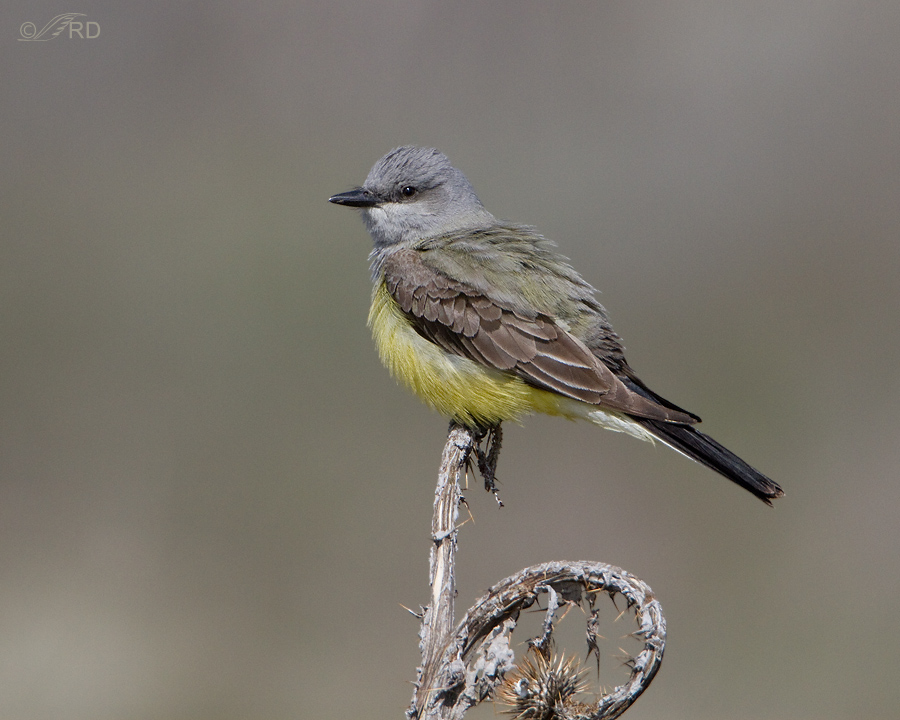
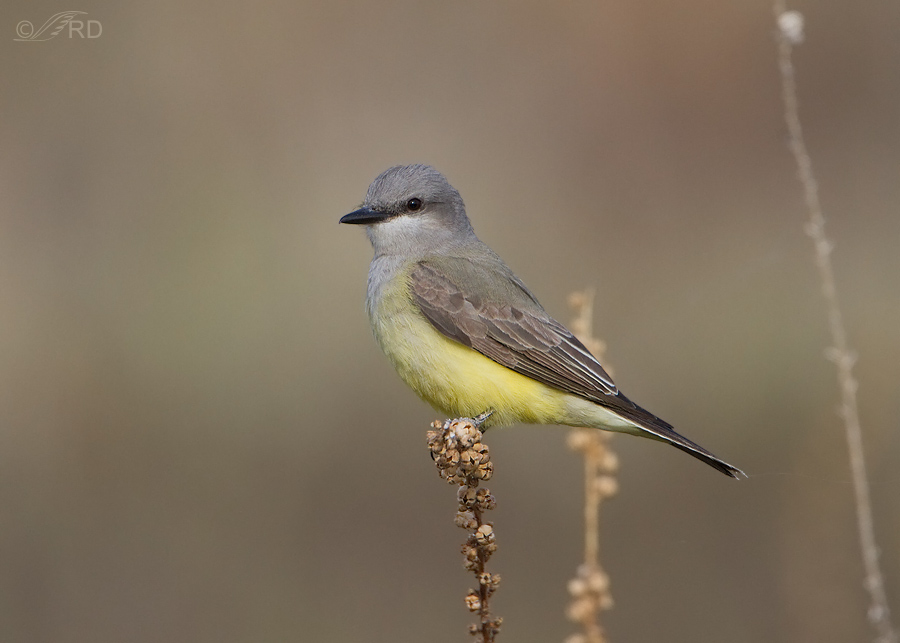
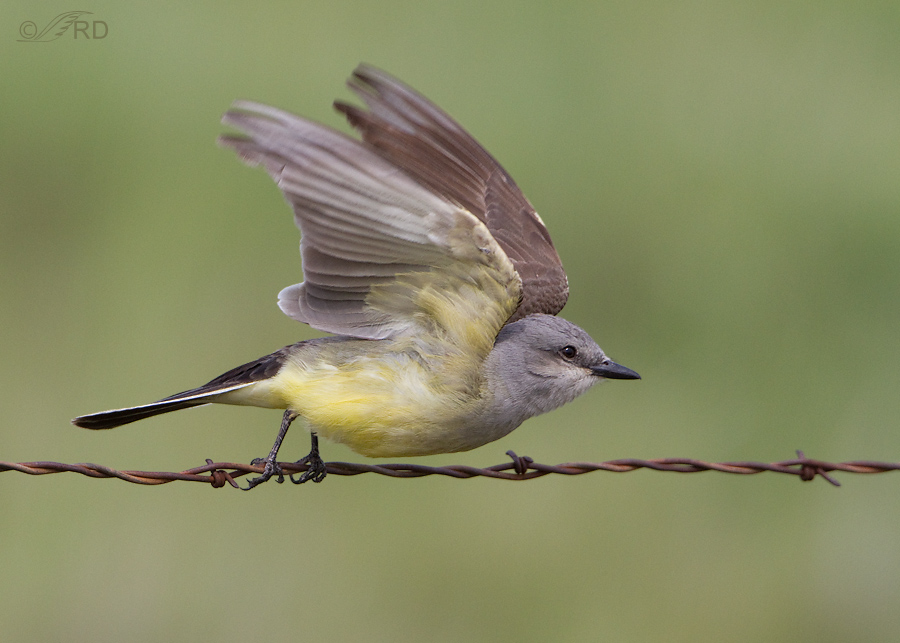
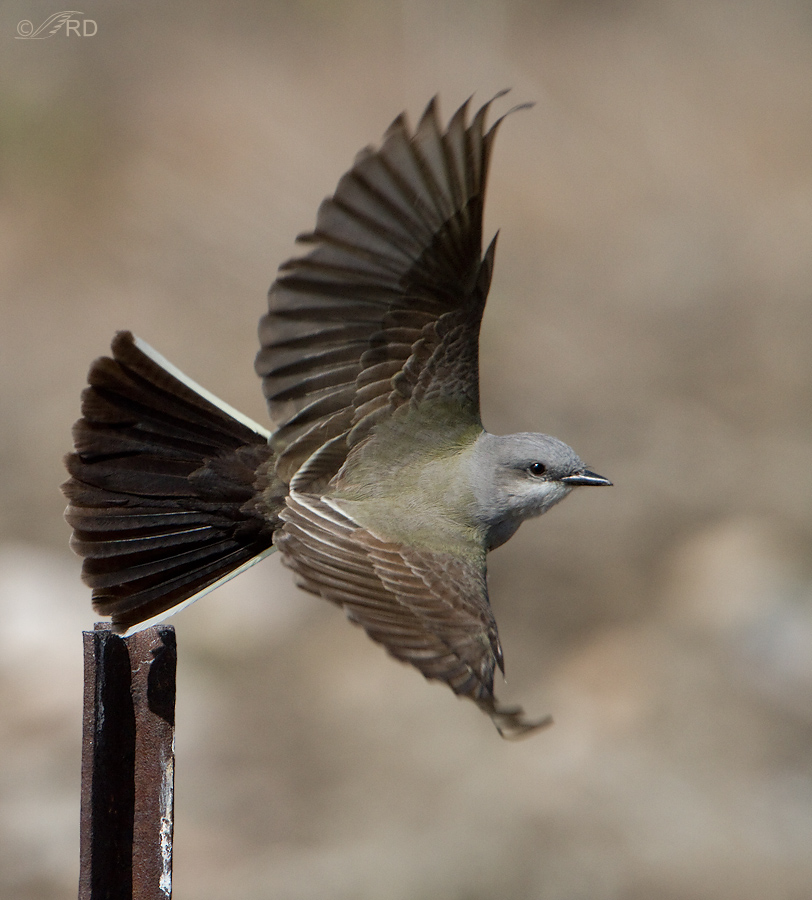
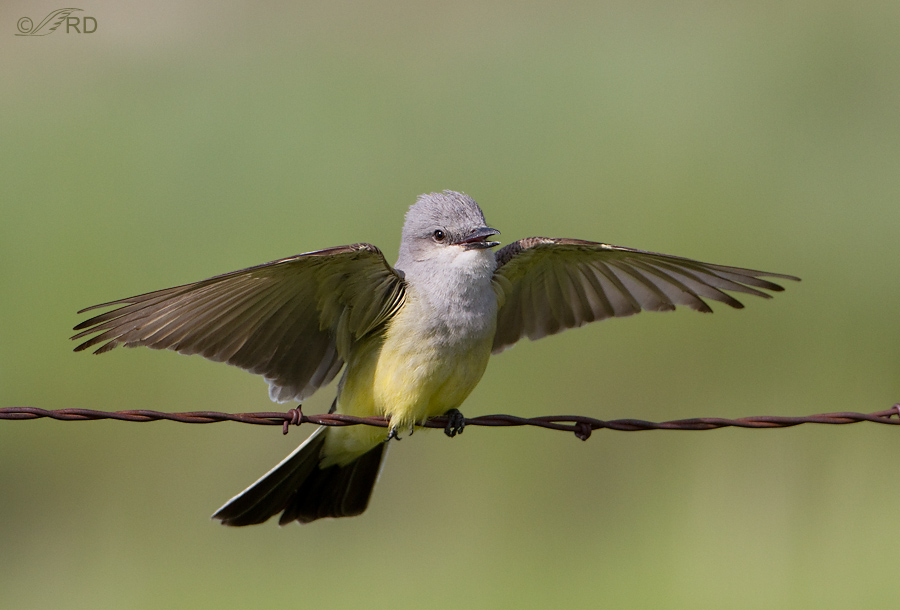
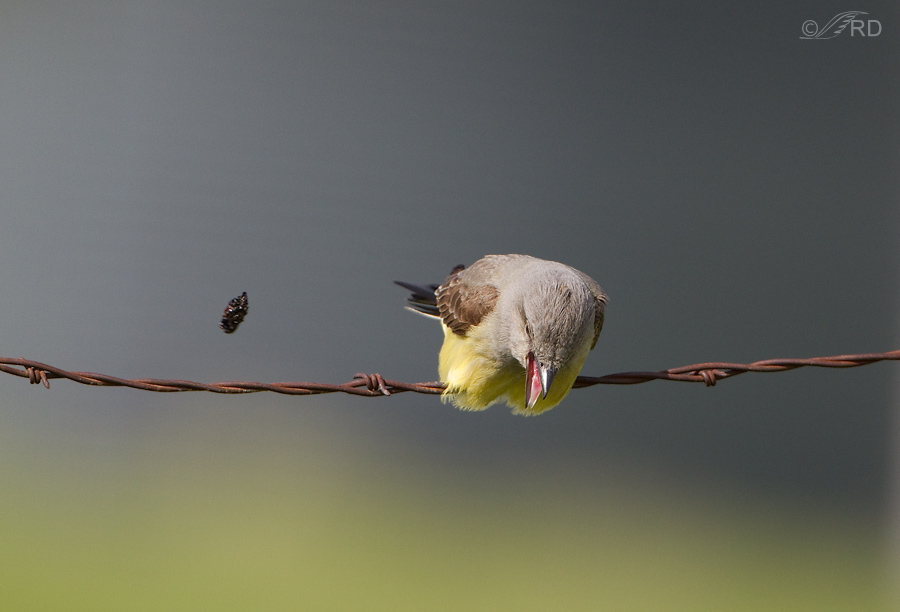
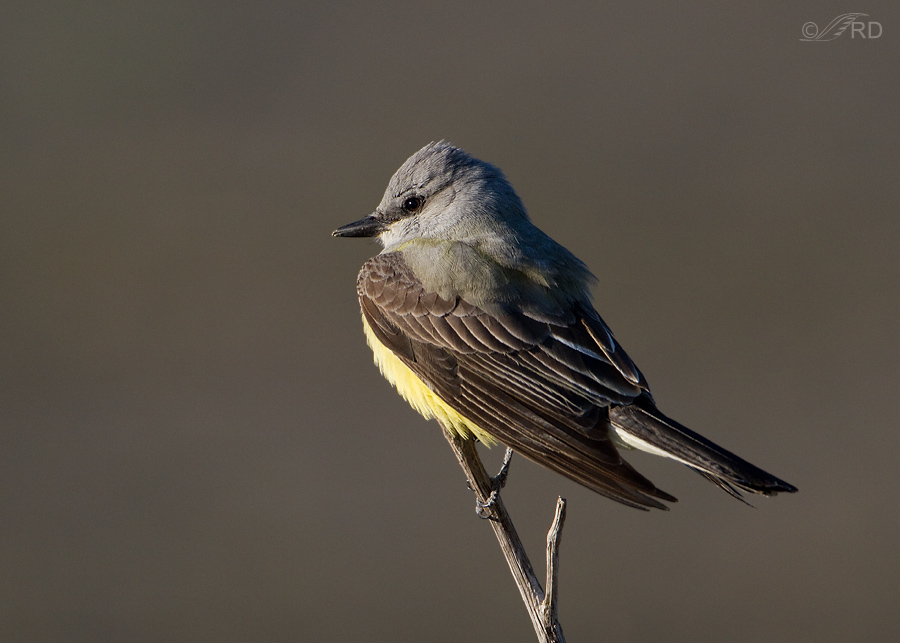
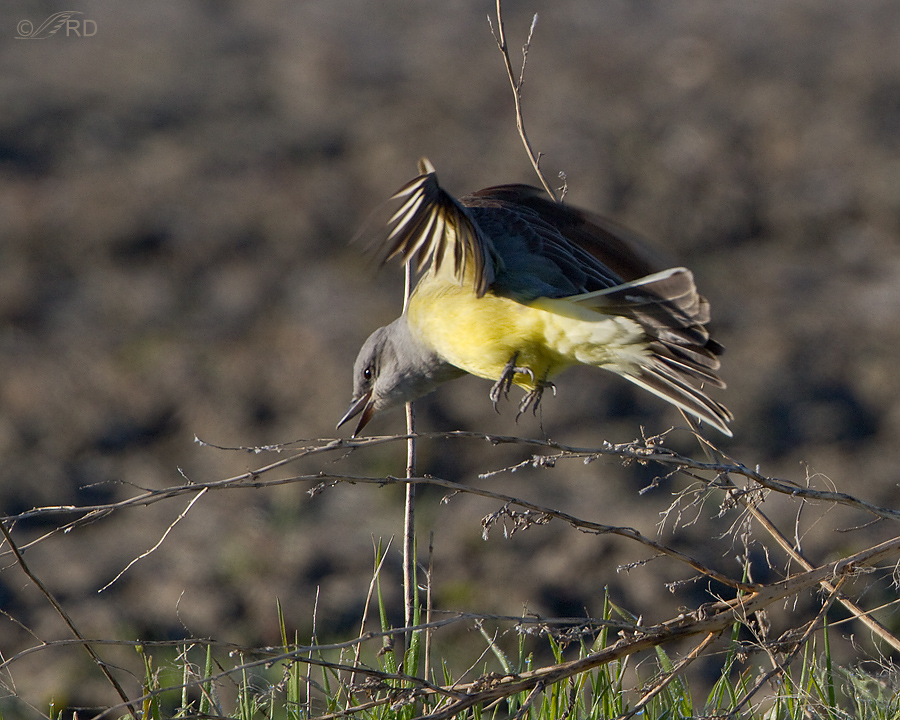
This is an absolutely amazing set of photos. I am always delighted with the way you capture the personality of whatever bird you are photographing. I find myself wondering if this bird’s pellet-casting behavior was different from what you usually see because pellet casting is not a usual thing with them?
Wonderful collection of kingbird pictures! I was delighted to watch a kingbird cast a pellet years ago. Not surprising considering what they eat.It’s anecdotal, but another observation for Cornell.
It’s amazing to catch such an unpredictable(in the wild)action on film.
beautiful pics of one of my favorite but noisy birds!
Ron, how cool — the pellet photo. There seems to be a developing theme in your unusual captures. btw, I’ve mentioned before how much I enjoy nature-against-technology juxtapositions. As such, I love the rusty fence post shot.
Thank you Ingrid. And you’re right, I do like to capture the unusual. That’s one of the reasons I often shoot at a highter shutter speed than most folks would – those unusual poses and behaviors usually occur very quickly and unexpectedly.
Ron,
Just found your website. *AMAZING* bird photographs and you are local even. Very impressive work on some truly difficult birds to photograph. I’ll look forward to following your birding adventures.
Thanks Bryan. I appreciate your kind words and look forward to seeing you around.
Kingbirds- yippee! I once saw one riding on the back of a Swainson’s Hawk. Fearless indeed. Re. your last paragraph: do you actually expect us to believe that you sometimes use the delete button on your 7D? I’m not buying it… Lol
Actually Mike, I’m the king(bird) of delete…
I love this post, Ron. Great shots all of them. You got great catch-lights in some of the stills. You got some wonderful action shots as well. I have been watching for them to arrive here. It will be soon and I will get my chance. But congrats to you on a wonderful collection. As you say, it is great to be living in this digital age.
Thank you Bob. Sounds like we both appreciate kingbirds.